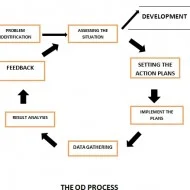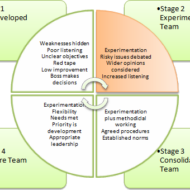Posted by Managementguru in Entrepreneurship, Financial Management, Project Management, Startups, Strategy
on Aug 4th, 2014 | 0 comments

Top 8 Mistakes That Kill #Startups Let us look at some mistakes that kill startups News: About three-quarters of venture-backed startup firms in the U.S. don’t return investors’ capital, according to recent research by Shikhar Ghosh, a senior lecturer at Harvard Business School. This information made me think and I have tried to summarize the main reasons for flawed-startups below in order to caution the young and growing entrepreneurs. 1. An Unscalable Idea Understand that a Technology-driven idea with more mass appeal is what potential investors are looking for. If your business is not easily scalable across a wide market, higher margins cannot be reaped for the kind of money invested. It is always better that your product or service is appealing to all types of clients in the market. 2. #Lack of Competitive Research Don’t bother if the business idea you are about to launch already exists in the market; let yours be unique and new. Think different is what I would suggest. WhatsApp is one great example for unique contribution to the android market, don’t you think so? Make sure you are clearly differentiated from the others (e.g., better product, better value, different target client) and that your plan is SECURE against future market entrants who may try to imitate you after your initial success. 3. #No Focus ‘One thing at a time’ will be the mantra for startups where entrepreneurs have to concentrate on launching a single product at any given time. This will also help in giving clarity to those who work under you. Don’t try to be a jack-of-all-trades, but end up being a master-of-none without a laser-sharp focus to start. 4. Catch Hold of Investors even at an Early Stage: First try to send feelers to whom you think as potential investors through the right channels. Say, you are a builder and trying to launch your first project. How will you make money rolling in to keep your project going? Either you go for bank loans – no bank will offer you big loans without proper recommendation, fund-flow projection and collaterals or you need to pitch-in this idea to known circles to popularize your product and raise seed money by way of advance. What I’m trying to highlight is that you need to bring in some initial investment which will help to keep the wheels rolling. 5. No Passion or Persistence Your passion should be infectious enough to attract the right kind of investors. Not all are lucky like Matteo Achilli, the 20 year Italian student, who is about to launch a new social networking site in the lines of LinkedIn, called ‘EGOMNIA”. ARVE Error: Mode: lazyload not available (ARVE Pro not active?), switching to normal mode Tech giants like Microsoft and Google have already geared up themselves to support this lad in areas of marketing and cloud computing. We should appreciate Matteo for his passion to create a networking site where job seeking professionals will be ranked and then directly connected to the employers. His persistence has paid off and he has been termed as “Italy’s Mark Zuckerberg”. 6. Failing to Form a Well-Oiled Team: Let your team be like-minded persons with same objectives and working for a cause. Investors never will want to back-up a single individual, but a well-oiled team. Be courageous to put forward your ideas in an authentic manner. After all it is your own brain-child. If you don’t believe in it, who is going to? 7. Not Going for the Right Mentors: Be surrounded by people who have already tested and tasted success in the market. Experience is like a seasoned teacher having solutions for all your questions....

Posted by Managementguru in Business Management, Change management, Human Resource, Organisational behaviour
on Mar 30th, 2014 | 0 comments

Integrated Organizational Development Organizational Development : in short OD, is a systematic, integrated and planned approach to improving enterprise effectiveness. Corporate firms can achieve success only when the available #resources are put to optimal use. Optimisation implies, deriving the best out of the limited or scarce resources. A firm is comprised of many departments, all of which compete for the same kind of resources and it becomes a tough proposition for the #management to allocate the resources suitably to different cost and #responsibility centers. The point is, changing needs of an organization has to be keenly observed by the management and if it senses a need for organizational development in any one of the disciplines, it should immediately employ appropriate #interventions to improve the #performance and #productivity. Culture – The Fundamental Aspect: Organizational development involves a paradigm shift in its culture, which is the fundamental aspect. It does not just mean finding solutions to problems. It is a process of managing change in an organization, resulting in behavioral changes in #employees for the good of the organization. Firms adopt different interventions to bring in changes in the behavior of employees through learning. The aim of introducing interventions would be to meet the short term and long term #objectives of the firm in an integrated fashion. Only when the employees are suitably appraised about the objectives and trained accordingly, their mindset gets tuned in to perform as per the expected standards. Intervention Techniques: Intervention techniques focus on shifting the individual’s focus from “me” to “us.” Before delving into the types of interventions, one might wonder why an organization needs to incorporate such interventions at the first place. The reasons may be attributed to the following: Some kinds of problems keep recurring to the surface. Even after solving a particular problem, another one of similar nature erupts. Productivity improvement techniques are not effective. Any amount of effort fails to yield the desired result. Employee morale is low and the top management is unable to pinpoint any particular reason for the undesired development. How to Overcome #Resistance from Employees’ End? Intervention techniques encourage employees to come out with suggestions and take part in decision making as well for the betterment of the organization. Though initially there might be a resistance to change, as it is natural for humans to resist change, gradually the workforce understands the importance of initializing the change that might have a direct bearing on them and their working environment. A holistic change is what is needed for an organization to rise as a whole to greater heights. #Group Training: Group training is a vehicle for individual change. It improves the listening skills, empathy, capability of being sensitive to fellow workers’ needs, interpersonal skills, and desired behavior in a social setup etc., Trainees selects the problem issues that are of interest to them, the setting being informal and unstructured and most interestingly there is no external force to structure the discussion. But it may be noted that the trainer interferes in extreme cases where the discussions turns out to be #counterproductive and destructive. #Survey Feedback: Survey feedback is another kind of intervention that gathers data from employees at different levels regarding the problem issues, through questionnaires and the feedback of the survey is analyzed by the top management to find the loopholes or bottlenecks hindering the development. This has been a popular organization development technique since time immemorial and still followed suit. These programs are useful in improving the #quality of work life and employee productivity. Analysis of the effectiveness of intervention programmes and evolving right research designs to measure the variables before and after the change, shall reveal the...

Posted by Managementguru in Business Management, Human Resource, Organisational behaviour, Training & Development
on Mar 30th, 2014 | 0 comments

Ideal Team Development How to effect ideal team development? As the saying goes, there is no ‘I’ in TEAM WORK. Every organization should understand the importance and highlight the need for TEAM DEVELOPMENT amongst their employees. In a small group there are chances for the ‘WE’ feeling to predominate for obvious reasons. In case of larger groups as seen in big corporate, individual interaction becomes complex and gives rise to conflicts which hold back the progress. The “I” Factor: Even philosophers don’t support or advocate the “I” FACTOR in individuals. It is purely a result of SUPER EGO as Sigmund Freud has put it rightly. Man is a MYRIAD OF EMOTIONS and his mind always picks up wrong cues and signals perfectly. So, TRAINING plays a major part in tuning the individual’s mind or shall I say, SYNCHRONISING his understanding with that of the organisation’s. Try to clearly explain during the induction as to: What is the ultimate goal of your organization in terms of productivity? What is expected of each individual in his own capacity? What is the culture of the organization? What is the leader of the organization like? How do you interact with your team mates? Code of conduct and disciplinary procedures What is his role regarding the team’s development? Picture Courtesy: Popyourcareer.com Self Awareness: Self awareness is the key factor for the growth of any individual.A mind that is PHILOSOPHICALLY BENT would prove prosperity to the team as well as the organization. Western countries have realized the importance of keeping the mind cool which can be well achieved through MEDITATION AND YOGA. Sensitivity training is of paramount importance to any organization as an intervention for achieving the overall goals of the organization. Inter Personal Human Behavior: Effective human interactions are the backbone of efficient organizations and this is not possible unless the interpersonal human behavior is CONTROLLABLE AND OPEN TO DISCUSSION. There should always be SCOPE for improvement and SPACE to express one’s feelings and offer ideas, i.e., sense of participation must be groomed. Team leaders and Managers are to be suitably trained to steer their ship and also rewards are welcome to motivate the crew. Why don’t leaders experiment with new behavior of effective leadership casting away conservative methods and also design flexible norms? It will constitute for a well behaved group and paves way for your organization to be UNIQUE. While organizing a group, a manager should carry out the process with a humane perspective taking into account, the human values, vision, creative thinking and better means of motivation. These factors align and bind the organization together paving way for holistic thinking and collaborative...






